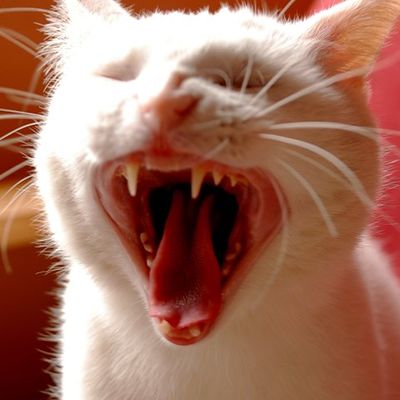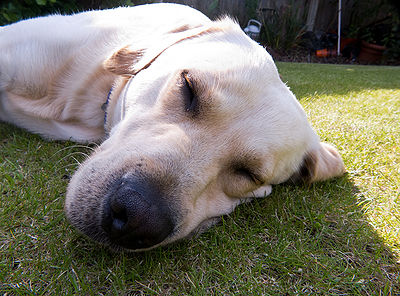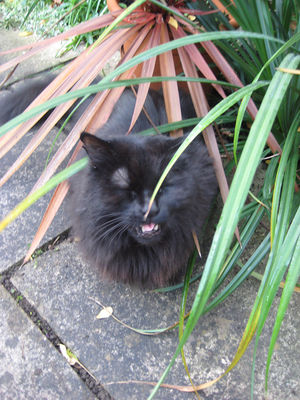
Cavities in cats are different from those in humans. They are called Felilne Odontoclastic Resorptive Lesions (FORL).
Unlike humans’ cavities, FORLs occur starting on the sides of teeth at the gumline. Bone-eating cells destroy the tooth and eat their way down to the root. They are hard to see as they are covered by gum tissue and plaque or tartar. The pulp can be exposed to infection and the tooth can break. The experience is very painful for the cat. Siamese and Persians seem to be more prone to FORL.
Symptoms of FORL are inflamed gums, bad breath, bleeding and tooth loss. Left untreated, the bacteria can enter the bloodstream, circulate through the body causing heart and kidney damage.
Surgery may be necessary to remove the affected tooth. In some cases, the tooth may be able to be restored.
Check your cat’s teeth regularly for any problems. Brush your cat’s teeth at least 3 times weekly. You can begin by dipping your finger in some tasty, soft treat (like tuna) that your cat enjoys and letting your cat lick it off. When your cat becomes used to this, rub your treat finger gently over the teeth. Taking the process slowly, eventually you can use a soft toothbrush or a gauze pad, cleaning the outside of the tooth to avoid bites. Switch from treats to special kitty toothpaste. NEVER use people toothpaste as it can upset your cat’s digestion or cause mouth irritations.
Your veterinarian will check your cat’s teeth as part of an office visit. Your vet may recommend a cleaning that involves giving your cat anesthesia and using instruments to remove tartar.
Keeping your cat’s teeth clean helps to maintain general overall health.



